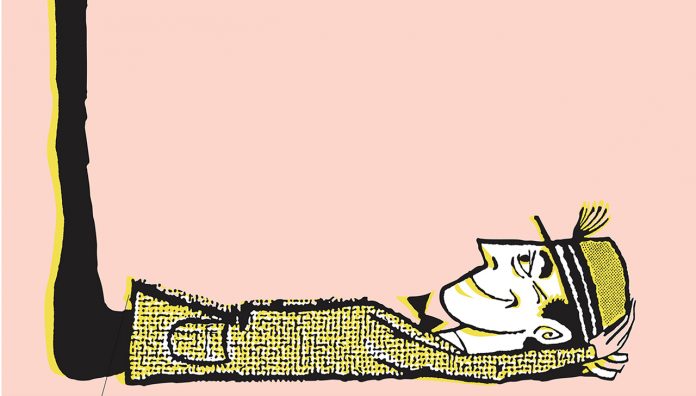As regulatory bodies restrict or ban carisoprodol, the highly addictive but effective muscle relaxant still dominates the US prescription drug market.
Carisoprodol, marketed in the United States1 as Soma and Vanadom, was one of the first anxiolytic drugs sold on the market. Soma was developed in 1950 by Frank Berger and Bernard John Ludwig at Carter Products.
The team at Carter Products also developed meprobamate (Early Elixirs, September) and felbamate, used in the treatment of epilepsy.2
In 1959 the US Food & Drug Administration approved carisoprodol for use and throughout the next two decades concerns about abuse of the drug spread.3 But it wasn’t until an explosion in its use in the 1990s and early 2000s that it was classified in America as a Schedule IV drug with a potential for abuse in 2012.4
Between 1996 and 2005 the number of emergency department visits caused by carisoprodol in the US increased from 6,569 to 19,513 with the drug listed as one of the 25 most dangerous in the country. Despite restrictions, carisoprodol is still widely prescribed with over 3 million prescriptions (a drop from the 10 million written in 2008) written in the US in 2016.5
How it works
The exact method of action of carisoprodol is unclear but laboratory studies on animals show the relief of painful musculoskeletal conditions is associated with changes in the interneural activity of the spinal cord and the descending reticular formation in the brain.
Carisoprodol’s effects are felt within 30 minutes and last for approximately six hours, bringing on feelings of drowsiness and mild to strong euphoria – albeit short-lived due to the rapid rate at which it is metabolised. The drug has powerful reactions with many opioids and analgesics (especially codeine) reducing the amount of the opioid required for effect.6 Researchers have described carisoprodol as producing an effect in users similar in some ways to alcohol intoxication.5
Prolonged use of carisoprodol can lead to physical dependence and withdrawal can be life threatening for high-dose users. Patients suffering from physical withdrawal can be given long-acting benzodiazepines such as diazepam or clonazepam as the dosage of carisoprodol is slowly reduced.6 Used illicitly, carisoprodol is mixed with opioids and benzodiazepines to accentuate a user’s high. This practice is referred to as ‘The Holy Trinity’.
A typical dose of carisoprodol is 350–700 mg but some take up to 1050 mg or more, per day.5
Use in Australia
Carisoprodol is no longer a licenced product in Australia but can be accessed via the Special Access Scheme. Globally, it has been removed from sale by authorities or heavily restricted in Norway, Sweden, the European Union, Indonesia and Canada.5
References
- Drug Enforcement Administration, Diversion Control Division, Drug & Chemical Evaluation Section. CARISOPRODOL (Trade Name: Soma®) 2019. At: www.deadiversion.usdoj.gov/drug_chem_info/carisoprodol/carisoprodol.pdf
- Tone A. The Age of Anxiety: A History of America’s Turbulent Affair with Tranquilizers. New York: Basic Books; 2009. At: https://www.amazon.com/Age-Anxiety-Americas-Turbulent-Tranquilizers/dp/046502520X
- Fass J. Carisoprodol legal status and patterns of abuse. Ann Pharmacother 2010;44(12):1962–7. At: https://www.ncbi.nlm.nih.gov/pubmed/21062909
- Reeves RR, Burke RS, Kose S. Carisoprodol: update on abuse potential and legal status. South Med J 2012;105(11):619–23. At: https://www.ncbi.nlm.nih.gov/pubmed/23128807
- The Drug Classroom. Carisoprodol 2016. At: https://thedrugclassroom.com/video/carisoprodol/
- US National Library of Medicine. PubChem. Compound summary, carisoprodol 2019. At: https://pubchem.ncbi.nlm.nih.gov/compound/Carisoprodol
- Fudin J. The perfect storm: opioid risks and ‘The Holy Trinity’. Pharmacy Times 2014. At: www.pharmacytimes.com/contributor/jeffrey-fudin/2014/09/the-perfect-storm-opioid-risks-and-the-holy-trinity
- Australian Government, Federal register of legislation. Poisons standard February 2017 made under paragraph 52D(2)(a) of the Therapeutic Goods Act 1989. At: www.legislation.gov.au/Details/F2017C00665



 Professor Margie Danchin[/caption]
Professor Margie Danchin[/caption]

 Dr Peter Tenni[/caption]
Dr Peter Tenni[/caption]
 How should we deprescribe gabapentinoids, according to the Maudsley Deprescribing Guidelines[/caption]
How should we deprescribe gabapentinoids, according to the Maudsley Deprescribing Guidelines[/caption]



 Pharmacists have always prescribed, but they have the potential to prescribe much more
Pharmacists have always prescribed, but they have the potential to prescribe much more






